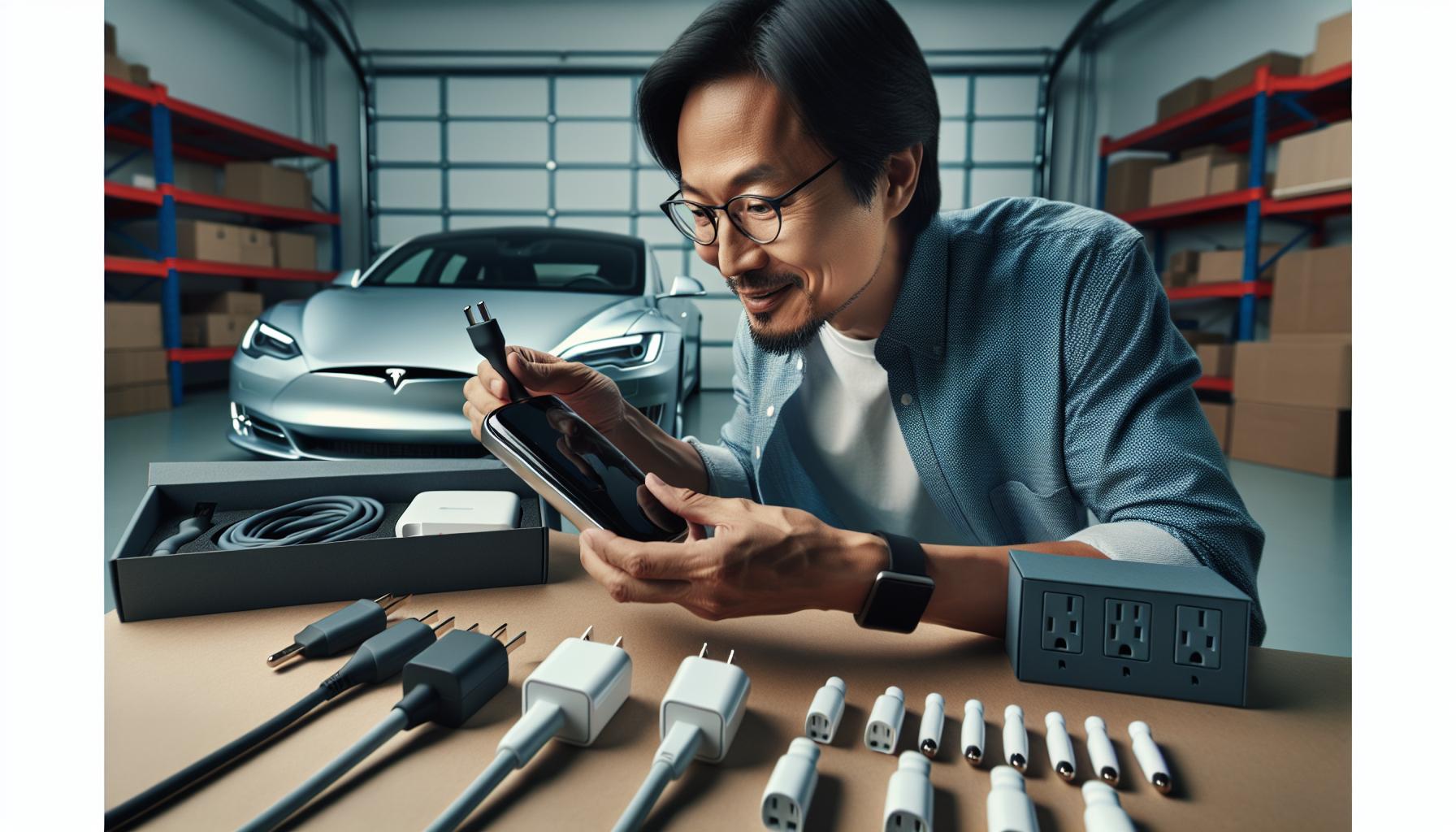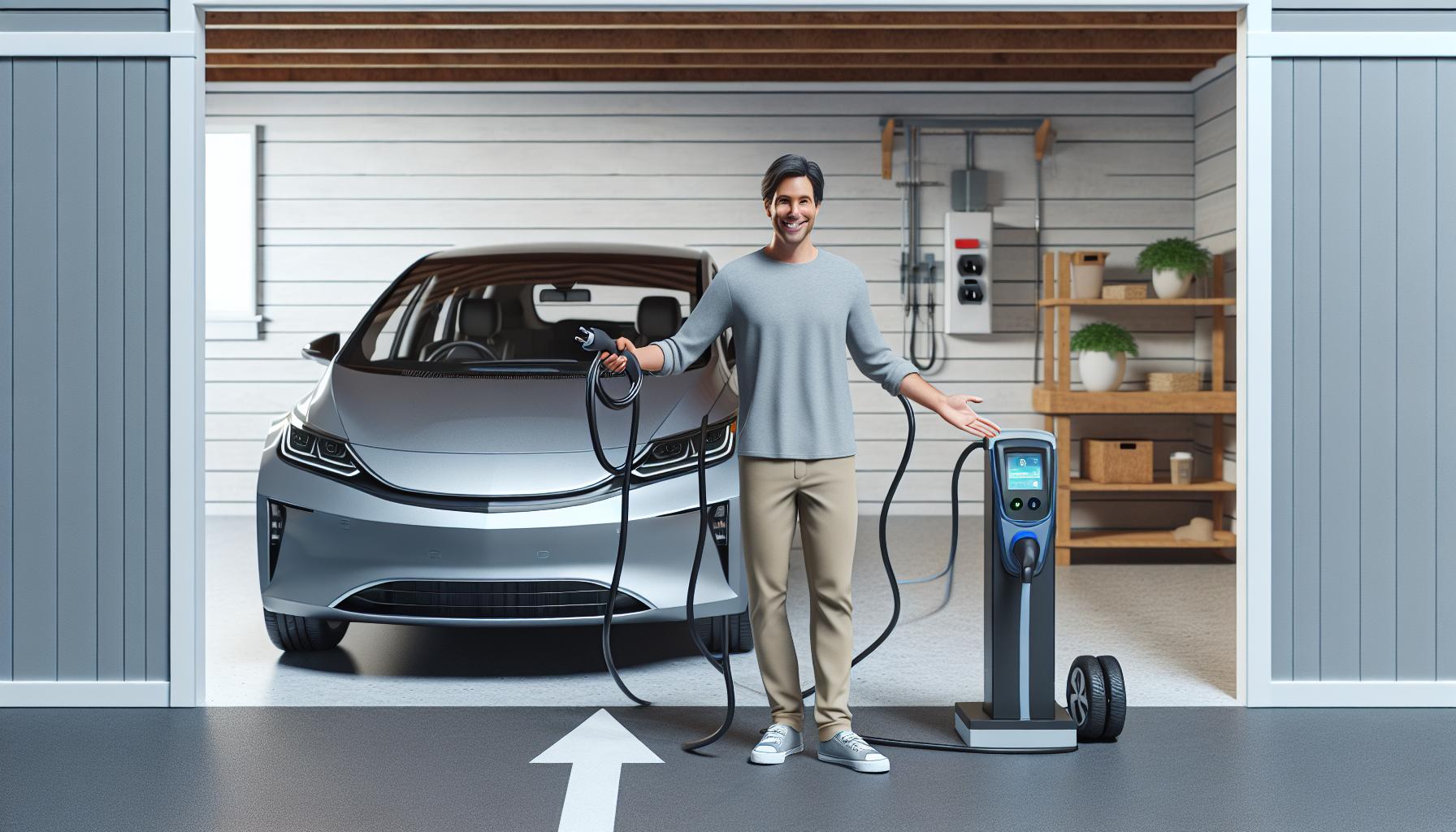Tesla owners know the importance of efficient charging solutions. The Tesla Mobile Connector offers a convenient way to charge vehicles at home or on the go. This article will guide readers through the setup and usage of the Mobile Connector, ensuring they maximize their charging experience and keep their electric vehicle powered up wherever they are.
Overview of Tesla Mobile Connector
The Tesla Mobile Connector offers a flexible charging solution for Tesla owners, facilitating charging at both home and on the go. This compact device simplifies the process of keeping electric vehicles powered.
What is the Tesla Mobile Connector?
The Tesla Mobile Connector is a portable charging device designed for Tesla electric vehicles. It connects to standard electrical outlets and enables charging in various environments, such as residential garages, parking lots, or campsites. It supports different voltages, making it compatible with multiple outlet types.
- Versatile Charging Options: It accommodates charging from 120V to 240V outlets, ensuring compatibility for most situations.
- Compact Design: The lightweight, portable design allows easy transport, making it convenient for travels or emergency charging needs.
- Integrated Safety Features: The Mobile Connector includes protections against overheating, short circuits, and ground faults, ensuring safe usage.
- User-Friendly Interface: Simple plug-and-play functionality makes it accessible, requiring no complex setup.
- Charging Cable Length: A standard 20-foot cable provides flexibility in positioning the vehicle relative to the power source.
The Tesla Mobile Connector enhances the charging experience for users, combining accessibility and safety in a user-friendly package.
Setting Up Your Tesla Mobile Connector

Setting up your Tesla Mobile Connector involves a few straightforward steps that ensure an efficient charging experience.
Unboxing and Inspecting the Connector
Unboxing the Tesla Mobile Connector reveals a compact charging device, a standard 20-foot charging cable, and necessary adapters for different outlet types. Inspect the device for any damages, verify that all components are included, and familiarize yourself with the user manual. Ensure the connectors and cord show no signs of wear or defects before attempting to use the charger.
Charging Station Installation Requirements
Charging with the Tesla Mobile Connector requires specific installation considerations. Use a standard electrical outlet capable of supporting 120V to 240V, depending on the charging speed desired. For optimal results, install a 240V, 40A outlet, typical for home installations. Verify that the outlet is grounded and complies with local electrical codes. Consult a licensed electrician for any modifications to ensure safety and efficiency when setting up your charging station.
How to Use Tesla Mobile Connector
The Tesla Mobile Connector offers an efficient way to charge electric vehicles at home or while traveling. Understanding the setup and use process is vital for maximizing charging capabilities.
Step-by-Step Instructions
- Unbox the Mobile Connector: Open the packaging and check for all components: the connector, charging cable, adapters, and user manual.
- Select an Appropriate Outlet: Choose a standard electrical outlet, either 120V or 240V, for charging. A 240V outlet speeds up the process.
- Connect to the Vehicle: Insert the charging plug into the vehicle’s charging port. Ensure it clicks securely into place.
- Plug into the Outlet: Connect the other end of the charging cable to your selected outlet. Make sure it fits snugly.
- Monitor Charging Status: Check the vehicle’s dashboard display or Tesla app for charging progress. It shows current battery percentage and estimated time to full charge.
- Disconnect After Charging: Once charging completes, first unplug the connector from the vehicle, then remove it from the power outlet.
- Home Charging: Use a dedicated 240V outlet to charge overnight. This setup often supports higher amperages, resulting in faster charging.
- Public Charging: Utilize Tesla charging stations or outlets found in public areas. Follow signage for proper usage guidelines.
- Travel Charging: Carry the Mobile Connector when on the road. Adapters allow charging from different outlet types encountered during travel.
- Emergency Charging: In situations where no EV-specific stations are available, standard household outlets can provide a temporary charging solution.
Utilizing these steps ensures a smooth charging experience with the Tesla Mobile Connector, enhancing the convenience of owning an electric vehicle.
Troubleshooting Tips
Understanding common issues with the Tesla Mobile Connector can improve the charging experience. Here are suggestions to identify and resolve these problems effectively.
Identifying Common Issues
- Connector Not Charging: If the Mobile Connector doesn’t initiate charging, check connections at both the vehicle and outlet.
- Charging Speed Lower Than Expected: A 120V outlet will result in slower charging rates. Ensure the outlet supports 240V for optimal performance.
- Error Messages: The Mobile Connector’s display may show error messages. Refer to the user manual for specific error codes.
- Tripped Circuit Breaker: Continuous interruptions in charging may indicate a tripped circuit breaker. Verify the breaker box for any trips.
- Overheating: If the connector feels hot during use, disconnect it immediately. Inspect for damage or consult a professional if overheating persists.
- Check Connections: Ensure the Mobile Connector plugs securely into both the outlet and vehicle. A loose connection may prevent charging.
- Use Proper Outlets: Always utilize outlets rated for 240V when possible. This practice speeds up the charging time significantly.
- Monitor Charging Status: Regularly check the charging status through the vehicle’s interface. Address any errors promptly based on the displayed messages.
- Inspect the Cable: Ensure the 20-foot charging cable is free from kinks, cuts, or abrasions. Damaged cables can affect charging efficiency and safety.
- Consult Professionals: For persistent issues, contact Tesla support or a licensed electrician. Professional help ensures safe and effective repairs and modifications.
Safety Considerations
Safety is paramount when using the Tesla Mobile Connector. Understanding proper handling and adhering to electrical safety guidelines significantly reduces potential risks.
Proper Handling and Usage
Using the Tesla Mobile Connector requires attention to detail. Avoid yanking or pulling on the cable, which may damage it or the connectors. Always store the charger in a dry, cool place when not in use. Check connections for tightness before starting the charging process to ensure optimal performance. Additionally, avoid using the connector in environments with water exposure to prevent electrical hazards.
Electrical Safety Guidelines
Electrical safety is crucial for successful charging. Ensure the outlet supports the appropriate voltage, either 120V or 240V, depending on the desired charging speed. Inspect the charging cable and connectors for any visible damage before every use. Avoid using extension cords, as they can create potential overheating or electrical failure risks. In the event of a tripped circuit breaker or overheating, disconnect the charger immediately and consult a qualified electrician for assistance.
Conclusion
Utilizing the Tesla Mobile Connector revolutionizes the charging experience for electric vehicle owners. Its versatility allows for efficient charging at home or on the road. By following the setup and usage guidelines, users can ensure optimal performance and safety.
Troubleshooting tips offer additional support for common issues that may arise, helping to maintain a seamless charging process. With its compact design and user-friendly interface, the Mobile Connector stands out as an essential tool for any Tesla owner. Embracing this technology not only enhances convenience but also contributes to a more sustainable driving experience.
Frequently Asked Questions
What is the Tesla Mobile Connector?
The Tesla Mobile Connector is a portable charging device designed for Tesla owners. It allows users to charge their vehicles using standard electrical outlets, making it versatile for home use, camping, or public parking.
How do I set up the Tesla Mobile Connector?
To set up the Tesla Mobile Connector, unbox and inspect the device, ensuring all parts are included. Choose a suitable outlet that supports 120V to 240V, preferably a 240V, 40A outlet for optimal charging speed. Consult a licensed electrician for any necessary modifications.
Can I charge my Tesla at home using the Mobile Connector?
Yes, you can charge your Tesla at home using the Mobile Connector. It’s recommended to use a dedicated 240V outlet to enhance the charging speed and efficiency.
What should I do if the Mobile Connector is not charging?
If the Mobile Connector is not charging, check the connections and ensure you’re using the correct outlet. Look for any damage to the charging cable and consult the user manual for troubleshooting. If the issue persists, contact a professional.
Are there safety tips for using the Tesla Mobile Connector?
Yes, proper handling is essential. Avoid yanking on the cable, store it in a cool, dry place, and inspect for damage regularly. Ensure the outlet supports the necessary voltage and disconnect if you encounter tripped breakers or overheating.
How long is the charging cable of the Tesla Mobile Connector?
The Tesla Mobile Connector features a standard 20-foot charging cable, providing flexibility in positioning your vehicle relative to the power source when charging.
Can I use the Mobile Connector at public charging stations?
The Tesla Mobile Connector is designed primarily for home use but can also be used at public charging stations where compatible outlets are available. Always check compatibility before use.
What are some common issues with the Tesla Mobile Connector?
Common issues include not charging, slow charging speeds, error messages, tripped circuit breakers, and overheating. These can often be resolved by checking connections, using appropriate outlets, and inspecting the cable for damage.
Is the Tesla Mobile Connector easy to transport?
Yes, the Tesla Mobile Connector is designed with a compact structure, making it easy to transport. Its lightweight design ensures it can be conveniently carried along during travels for on-the-go charging.

